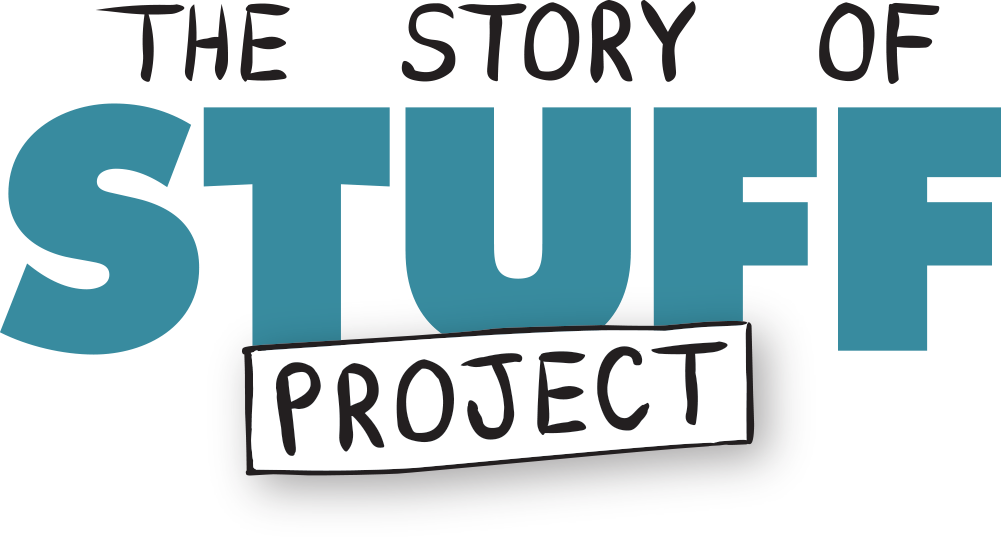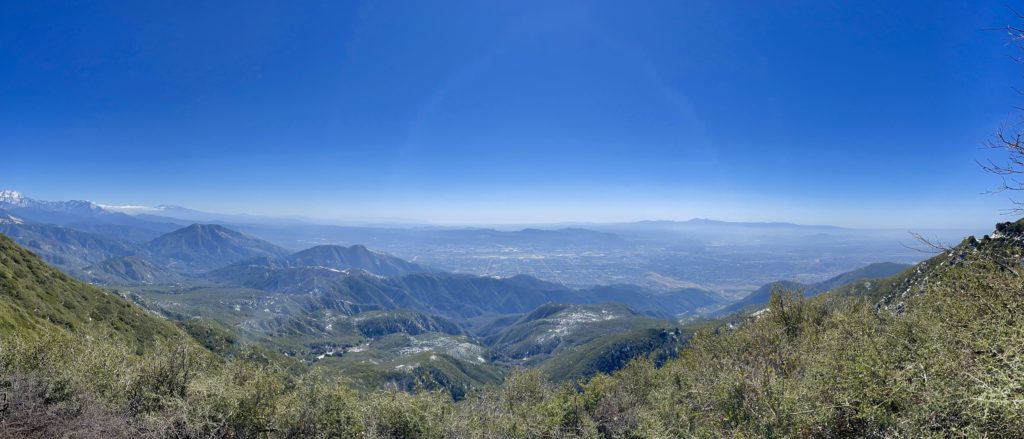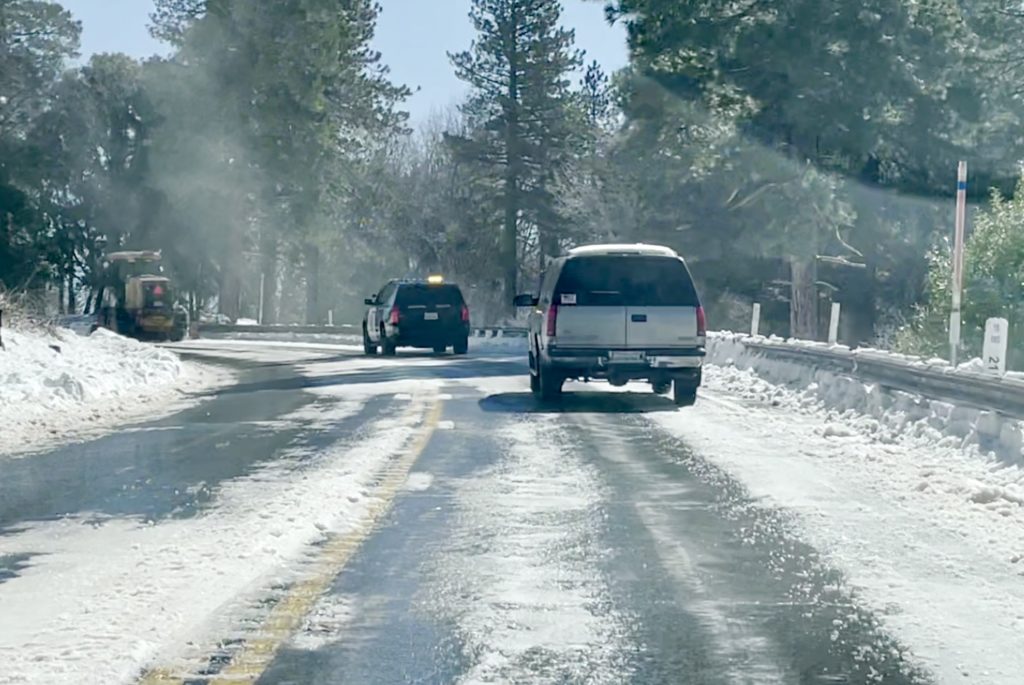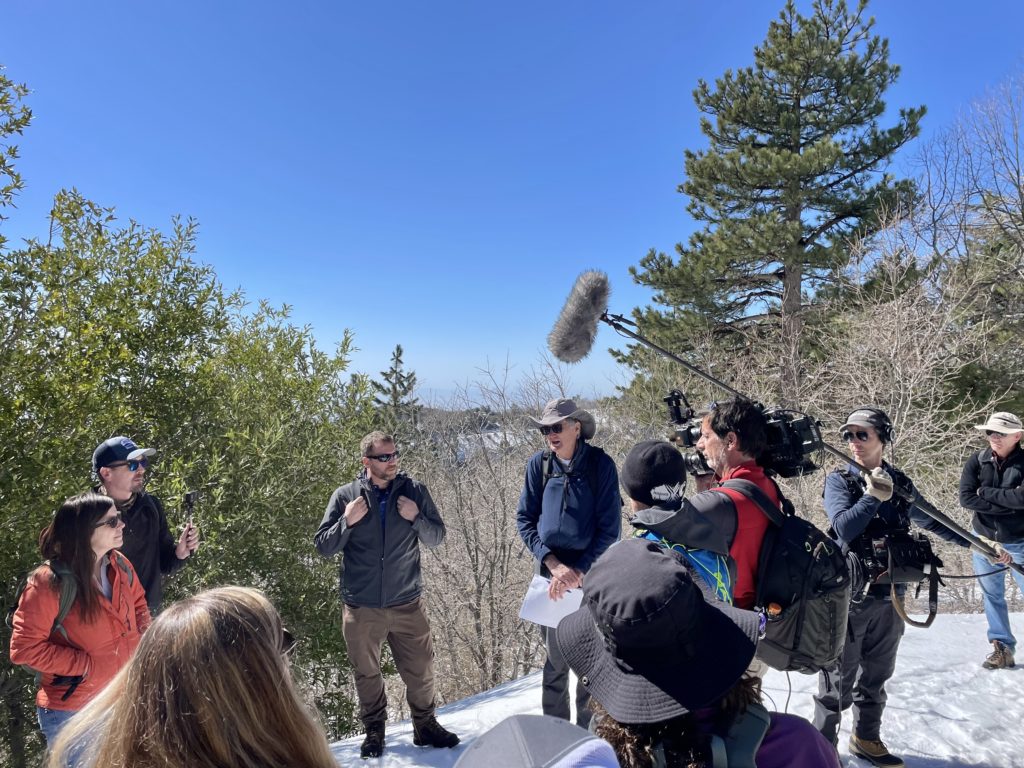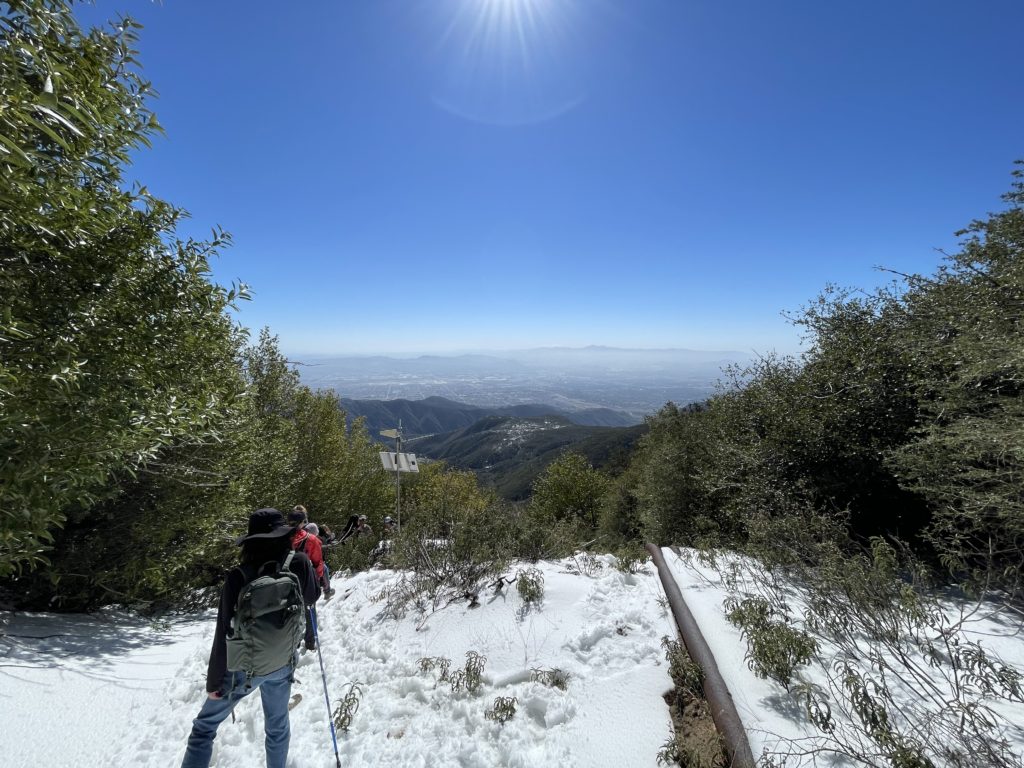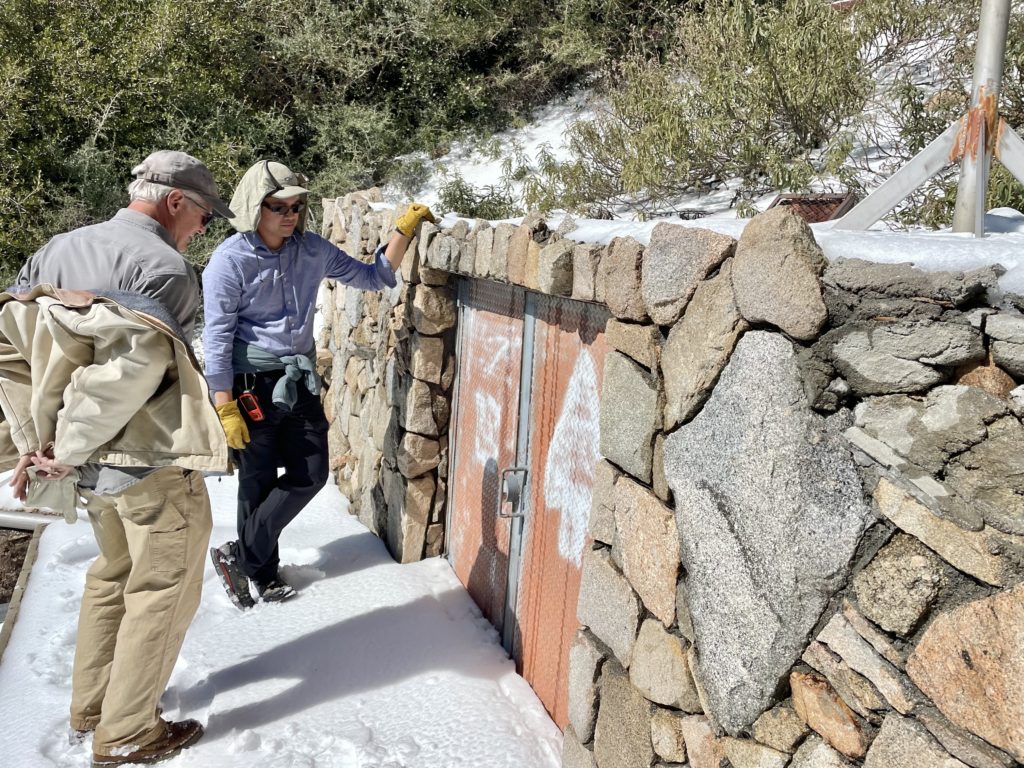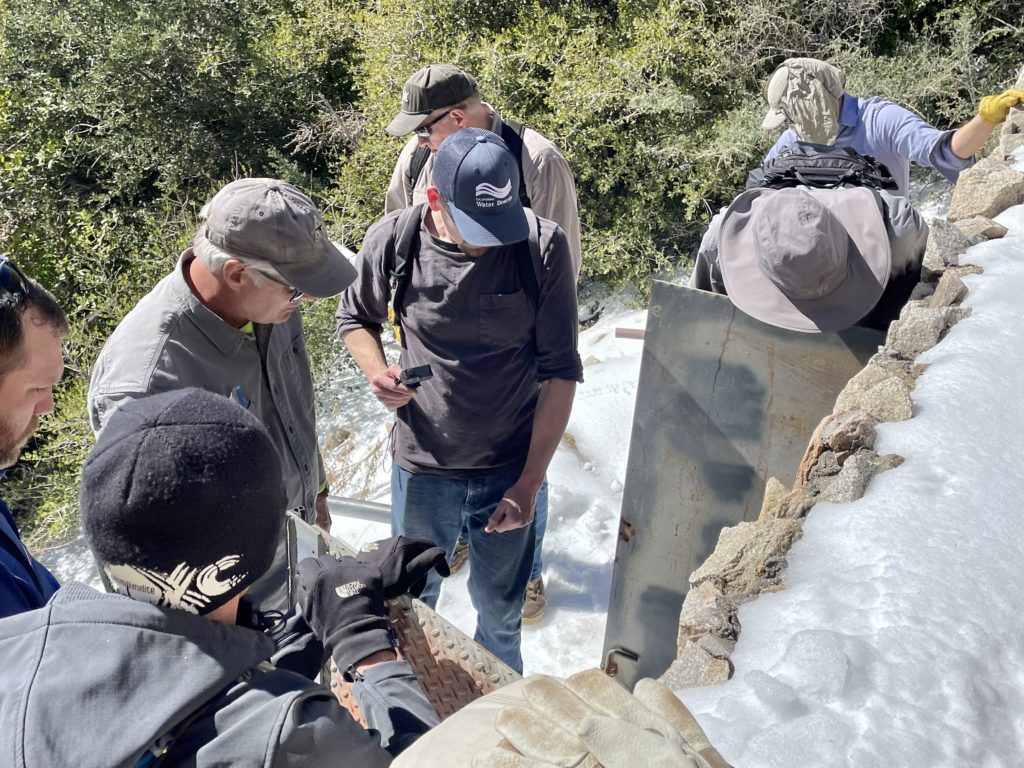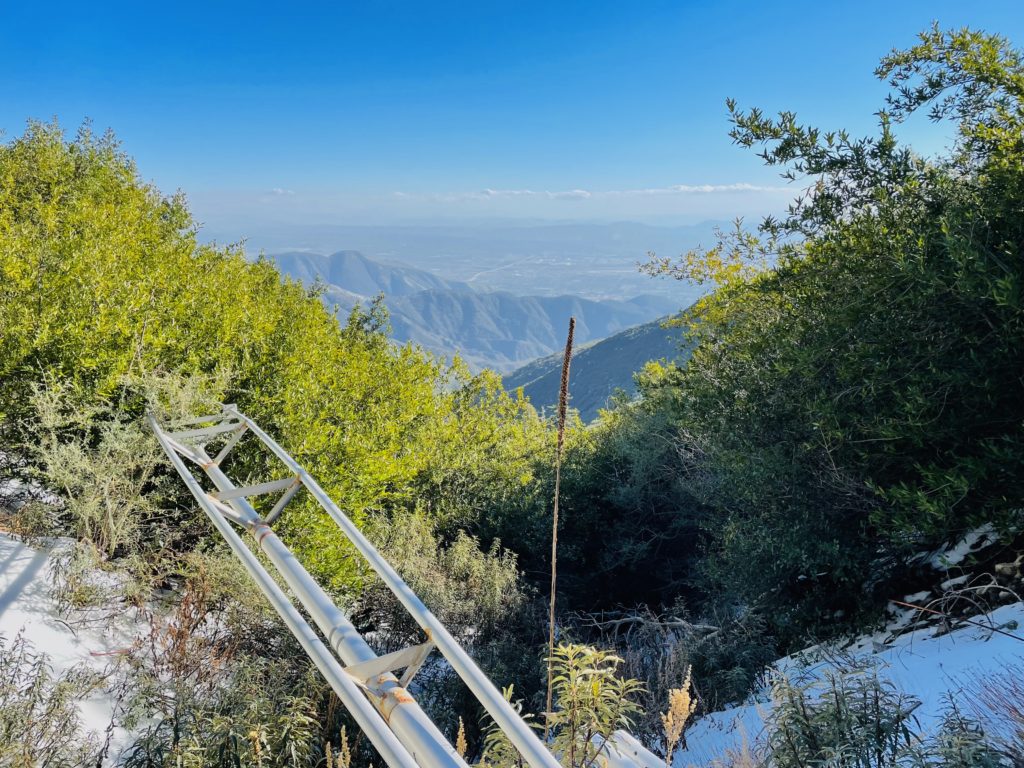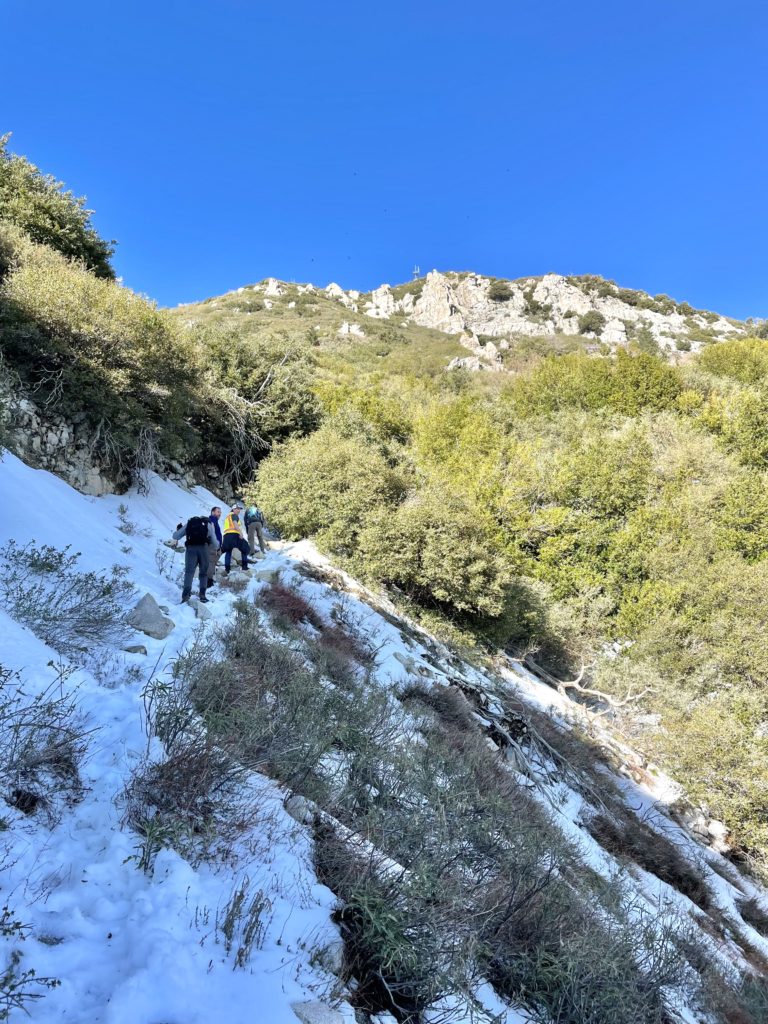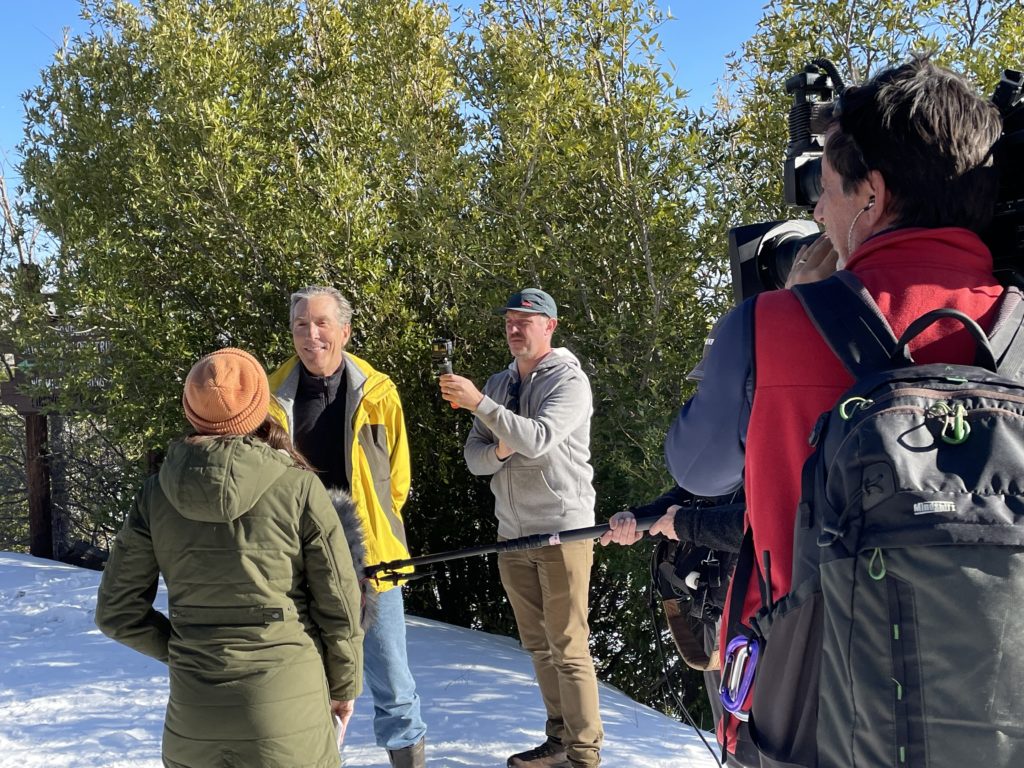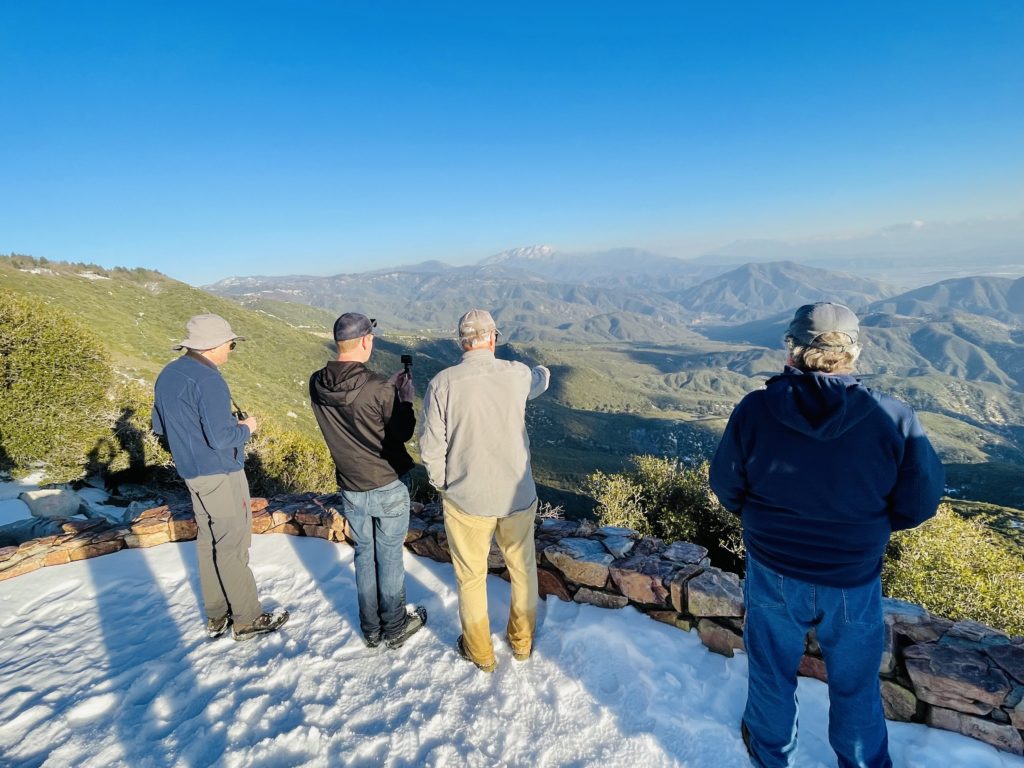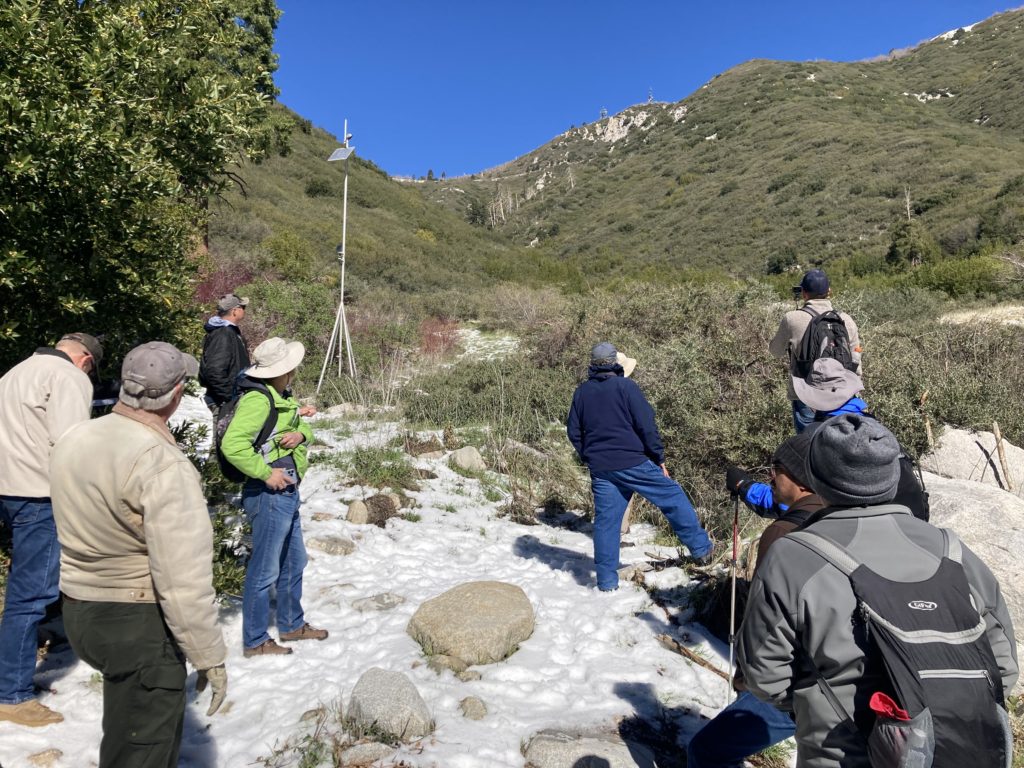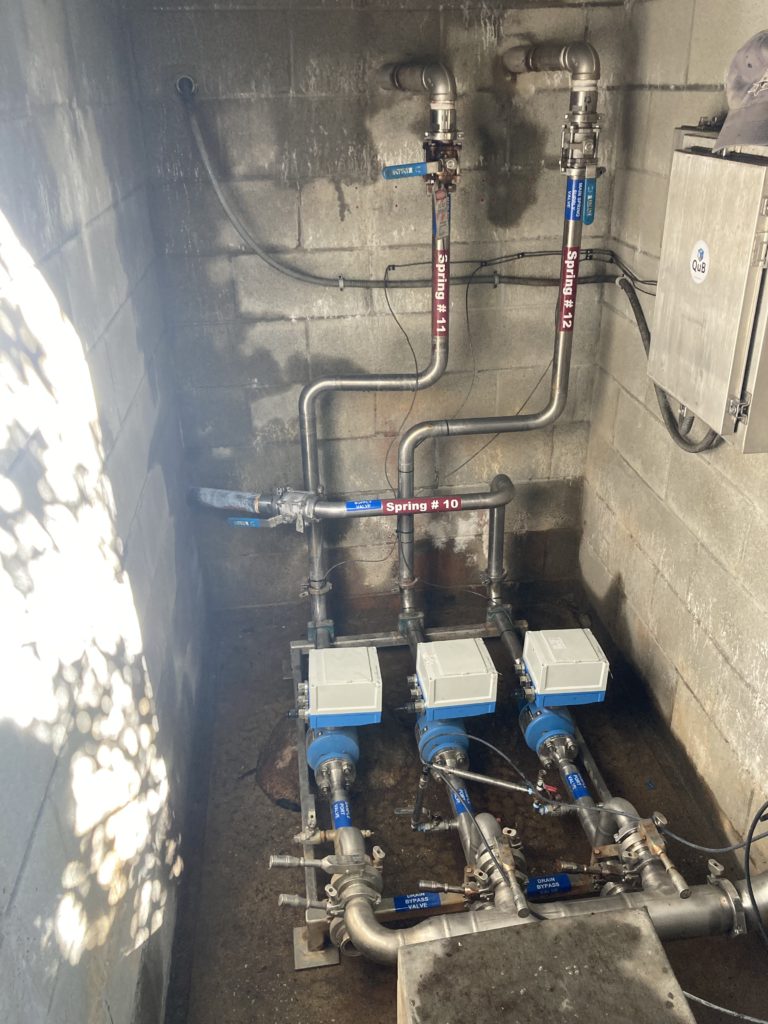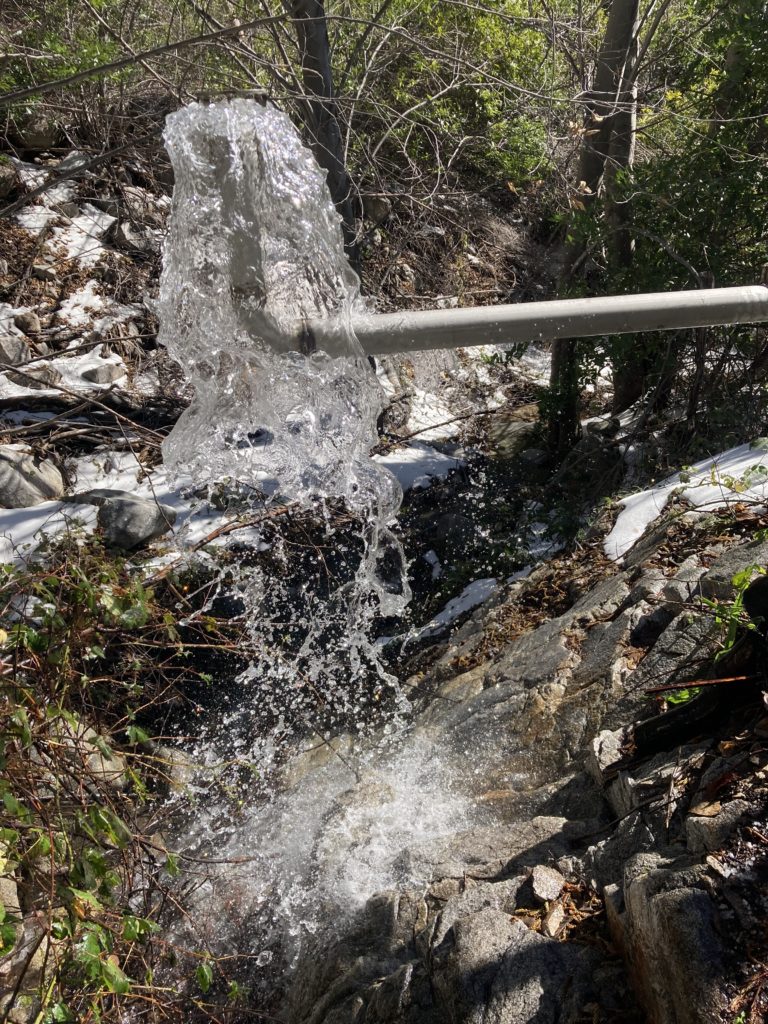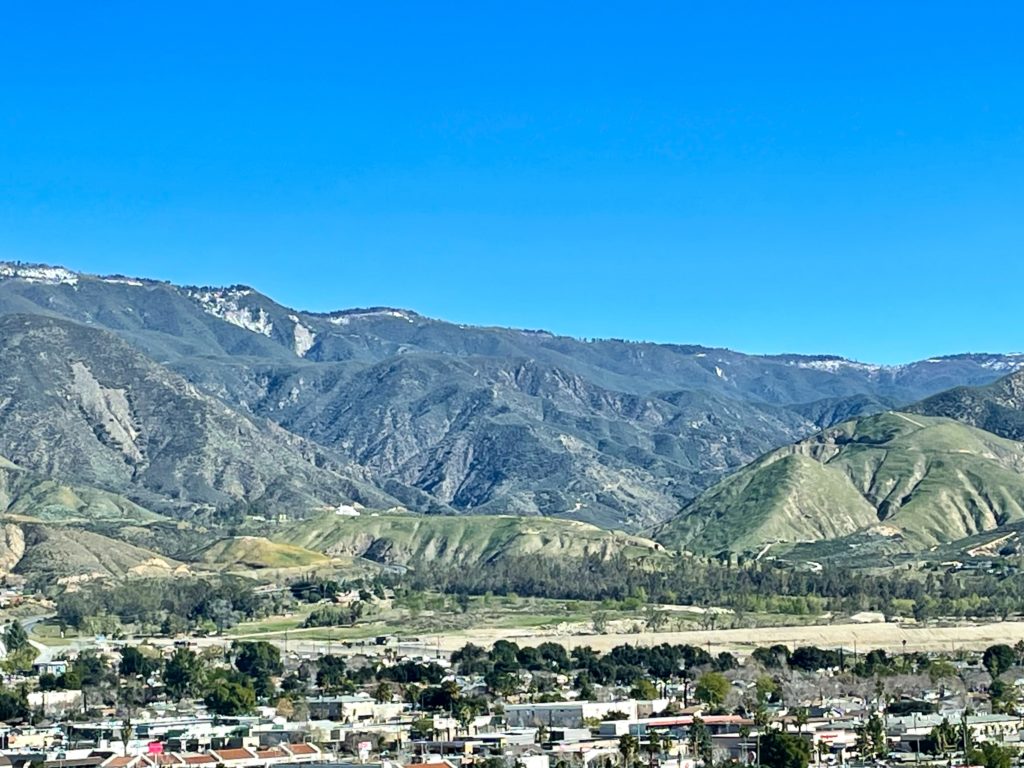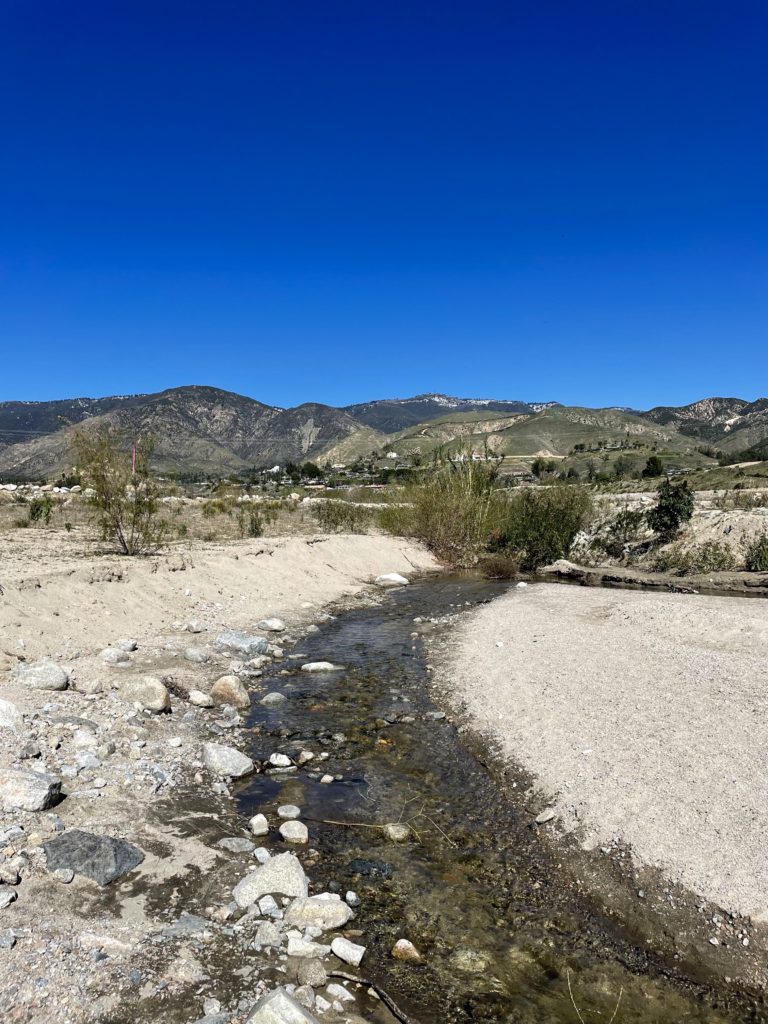FEBRUARY 2022
SAN BERNARDINO NATIONAL FOREST, CALIFORNIA
Photo Essay by Michael O’Heaney. Special thanks to Hugh Bialecki for capturing some of these images.
John Muir said that “Of all the paths you take in life, make sure a few of them are dirt.”
After reams of paper evidence, hours of testimony over Zoom, and dozens of legal tussles, the California Water Board hearing over bottling giant BlueTriton’s removal of spring water from the San Bernardino National Forest finally got to ‘the dirt’ last week.
Except that the dirt was covered in newly fallen snow.
The spring sources for BlueTriton’s Arrowhead Mountain Spring Water brand are located nearly 6,000 feet up the San Bernardino Mountains, just below the Rim of the World Highway and the unincorporated mountain village of Rimforest. The City of San Bernardino lies in the flats below.
An overnight storm closed road access to Rimforest for most of the morning, but a bright sun and blue skies warmed the day and made the hike down to the springs possible, if challenging.
Along with the Hearing Officer, Alan Lilly, and a number of BlueTriton staff, lawyers and consultants, the site visit included representatives of the Board’s Water Rights Enforcement Unit, the San Bernardino Valley Municipal Water District, Department of Fish & Wildlife, and U.S. Forest Service.
Citizens were well represented by Story of Stuff Project and local allies Steve Loe, Amanda Frye and Hugh Bialecki, as well as folks from the Save our Forest Association, Center for Biological Diversity, Sierra Club and the League of Women Voters.
Also participating was a CBS News crew led by reporter Lilia Luciano.
As the crow flies, the springs are only hundreds of feet below the rim, but it was tricky hiking in the snow.
First we traveled downhill to the Spring 7 complex, where four pipes bored horizontally between 200 and 400 feet into the mountain terminate together in a concrete bunker. Larry Lawrence of BlueTriton opened the large steel door so we could examine the inside.
Next we traveled back uphill and then across the mountain to Springs 1, 1A and 8, which are three horizontal borings that extend between 100 and 300 feet into the mountainside.
From the 1, 1A and 8 Complex, we headed across the mountain again to Spring Tunnel 2, a different mechanism for removing the water than the horizontal borings, in which a tunnel is dug into the hillside, allowing water to infiltrate the walls and floor and then collect before entering the downhill pipeline. According to BlueTriton, the tunnel extends 37 feet into the hillside.
Downhill from Tunnel 2 we hiked across a steep slope to Spring Tunnel 3, the final stop in the Upper Springs and the spring location lowest in elevation among those we visited. According to BlueTriton, Tunnel 3 extends 89 feet into the hillside, taking a dog leg to the left from the entrance about 25 feet in. I walked into the tunnel just past the dog leg with the aid of a flashlight. The pipeline moves downhill from the Tunnel (left photo).
After climbing back up the mountain to Rim of the World Highway (Hwy 18), the CBS News journalist taped an interview with ally Dr. Hugh Bialecki of the Save our Forest Association, as well as Jule Rizzardo of the State Water Resources Control Board’s Office of Enforcement.
Hugh lives up on the mountain and has been a steadfast monitor of conditions in Strawberry Canyon, often accompanying journalists on hikes to the BlueTriton developments with another local activist, Amanda Frye.
A core group then proceeded by car to the Red Rock Scenic Overlook, located on Highway 18 between Baylis Picnic Area and the community of Rimforest.
The turnout offers vistas of the front range of the San Bernardino’s and on clear days like the one we enjoyed you can see well into the valleys. Strawberry Peak Fire Lookout is nearby (below right).
At the overlook, Larry Lawrence and retired Forest Service biologist Steve Loe took turns orienting the Hearing Officer to the surrounding area, including the lower spring complex which the group would access by helicopter on Day 2 of the Site Visit.
On Day 2, the group convened in the morning at San Bernardino International Airport for helicopter transport to the Lower Spring Complex and Boreholes 10, 11 and 12. Despite a wind advisory, the helicopter chartered by BlueTriton flew the party to a nearby helipad for a several hour visit to the boreholes and the newly installed ‘overflow point’ down Strawberry Creek below the Lower Spring Complex.
Both Steve Loe and Hugh Bialecki participated in the visit and reported BlueTriton was, unsurprisingly, releasing significant water downstream.
While the group hiked the Lower Spring Complex, I was able to take some photographs of the Forest from San Bernardino, providing a broader view of the landmarks under consideration in the hearing, including the Arrowhead landmark located in the San Bernardino Mountains, which points (right photo below) to the historic Arrowhead Hot Springs Hotel below it. The hotel property, which plays a significant role in the water rights claims at issue, is now owned by the San Manuel Band of Mission Indians, which declined the Hearing Officer’s request for a visit.
Upon their return from the Lower Spring Complex, several of the party met where East Twin Creek, to which Strawberry Creek is a tributary, meets East 40th Street in San Bernardino. East Twin and Strawberry meet near the Arrowhead Springs Hotel property and East Twin then flows into the city of San Bernardino. After the previous two days rain and snowfall, the Creek had some flow in it.
After our stop at East Twin Creek, I was able to tape a message of gratitude from Steve Loe, which really brought home the incredible partnership we’ve forged over the last six years between national, state and local organizations and individuals to protect Strawberry Creek. Steve is retired and spends most of his time with his grandchildren, but he’s been a rock in this struggle and when we eventually return all of the water BlueTriton removes to Strawberry Creek it will be in no small part because of Steve’s contribution and the contribution of so many other local heroes who the Story of Stuff Project team and Community have been proud to support.
